Recent Posts
Celebrating Fire Prevention: Essential Tips for Homes and Businesses
2/20/2025 (Permalink)
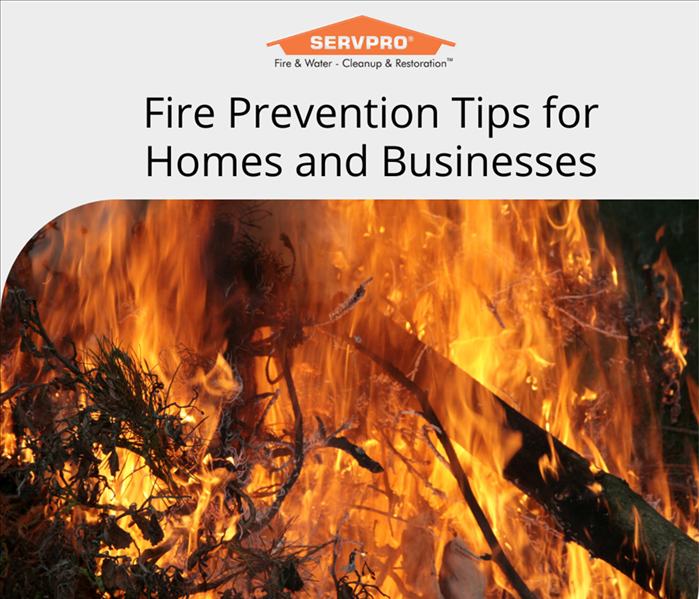 Fire prevention is crucial for protecting your property, loved ones, and business assets.
Fire prevention is crucial for protecting your property, loved ones, and business assets.
Fire prevention is crucial for protecting your property, loved ones, and business assets. Whether you're a homeowner or a business owner, taking proactive fire safety measures can help prevent devastating losses. Here are key fire prevention tips to safeguard your home or business.
1. Install and Maintain Smoke Alarms
Why It Matters: Smoke alarms provide early warnings that can save lives and minimize property damage.
For Homes: Install smoke alarms in every bedroom, outside sleeping areas, and on every level of your home.
For Businesses: Place smoke alarms in high-risk areas like kitchens, break rooms, and storage rooms.
Test Regularly: Test alarms monthly and replace batteries at least once a year. Replace the entire unit every 10 years.
2. Practice Safe Cooking Habits
Why It Matters: Cooking is a leading cause of home fires and injuries.
Never leave cooking food unattended.
Keep flammable items like towels, curtains, and paper away from stovetops.
For Businesses: Ensure kitchen staff is trained in fire safety and proper equipment use.
3. Use Electrical Systems Safely
Why It Matters: Faulty wiring and overloaded circuits are common fire hazards.
Avoid overloading outlets and power strips.
Inspect cords for damage and replace any that are frayed or worn.
Hire licensed professionals for regular electrical inspections and repairs.
4. Store Flammable Materials Properly
Why It Matters: Flammable liquids and materials can ignite easily if not stored correctly.
Store flammable materials in their original containers, away from heat sources.
For Businesses: Follow OSHA guidelines for handling and storing flammable substances.
5. Create and Practice a Fire Escape Plan
Why It Matters: Knowing what to do during a fire can save lives.
For Homes: Develop an escape plan with two exits per room and a designated meeting spot. Practice the plan with your family.
For Businesses: Create an emergency action plan, conduct regular fire drills, and post clear evacuation routes.
6. Use Heating Equipment Safely
Why It Matters: Space heaters and fireplaces are common culprits of winter fires.
7. Install Fire Suppression Systems
Why It Matters: Fire extinguishers and sprinklers can stop small fires before they spread.
Fire Damage Restoration and Recovery
Even with the best fire prevention measures, fires can still occur. Having a plan for restoration and recovery is crucial. Our highly trained professionals specialize in fire damage restoration, including:
Smoke and Soot Cleanup
Odor Removal
Structural Repairs
As a trusted leader in the restoration industry, SERVPRO of Foxborough has the advanced training and equipment needed to restore your home and business after fire damage. Contact us today for expert fire damage restoration services!
A Healthy Home for a Healthy Heart: Creating a Safe, Stress-Free Environment
2/12/2025 (Permalink)
 While diet, exercise, and medical check-ups are essential, your home environment also plays a crucial role in your well-being.
While diet, exercise, and medical check-ups are essential, your home environment also plays a crucial role in your well-being.
February is American Heart Month, a time to focus on cardiovascular health and ways to protect your heart. While diet, exercise, and medical check-ups are essential, your home environment also plays a crucial role in your well-being.
From indoor air quality to stress reduction, a healthy home supports a healthy heart. Let’s explore the connection and practical steps to make your home a heart-friendly space.
Prioritize Indoor Air Quality
The air you breathe inside your home affects your overall health. Poor indoor air quality can contribute to respiratory issues, inflammation, and increased stress—all of which impact heart health.
Heart-Healthy Home Tips:
- Clean Regularly: Dust surfaces, vacuum with a HEPA filter, and wash bedding to reduce allergens.
- Control Humidity: Keep indoor humidity levels between 30-50% to prevent mold growth.
- Change Air Filters: Replace HVAC filters every 1-3 months to maintain clean air circulation.
- Let in Fresh Air: Open windows whenever possible to improve ventilation.
Reduce Stress with a Clutter-Free Home
A cluttered home can create unnecessary stress, which is linked to high blood pressure and heart disease. A well-organized space promotes calmness and relaxation.
Heart-Healthy Home Tips:
- Declutter Daily: Spend just 10 minutes a day tidying up.
- Organize for Efficiency: Keep items in designated spaces for easy access.
- Create Relaxation Zones: Designate areas for unwinding, such as a reading nook or meditation space.
Keep Your Home Mold-Free
Mold exposure can lead to respiratory problems and increased cardiovascular stress. It thrives in damp environments and can spread quickly if not addressed.
Heart-Healthy Home Tips:
- Address Water Damage Quickly: Fix leaks and dry out any moisture-prone areas.
- Use Exhaust Fans: Proper ventilation in bathrooms, kitchens, and laundry rooms helps reduce humidity.
- Check for Mold Regularly: Inspect hidden areas, such as under sinks and behind appliances.
Minimize Chemical Exposure
Many household cleaning products contain volatile organic compounds (VOCs), which can cause inflammation and stress on the body—including the heart.
Heart-Healthy Home Tips:
- Choose Natural Cleaners: Use vinegar, baking soda, and lemon as non-toxic alternatives.
- Read Product Labels: Look for "low-VOC" or "fragrance-free" options.
- Ventilate While Cleaning: Open windows and use fans to improve airflow.
Maintain a Safe and Supportive Home
A safe living environment reduces the risk of stress and accidents, helping to protect both your physical and mental well-being.
Heart-Healthy Home Tips:
- Install Smoke & Carbon Monoxide Detectors: Ensure they’re functional and placed in key areas.
- Eliminate Trip Hazards: Secure loose rugs, keep walkways clear, and install handrails where needed.
- Improve Lighting: Proper lighting reduces eye strain and prevents accidents.
Your Heart Deserves a Healthy Home
A heart-healthy lifestyle is more than just diet and exercise—it includes creating an environment that supports your well-being. By keeping your home clean, organized, and safe, you can reduce stress and protect your cardiovascular health.
At SERVPRO of Foxborough, we specialize in restoring homes to safe, healthy conditions. Whether it’s improving air quality, addressing water damage, or eliminating mold, our team has the advanced training and equipment to help you create a home that supports your heart health.
Why SERVPRO Is the Go-To Restoration Partner for Insurance Professionals
2/4/2025 (Permalink)
 As a leader in the restoration industry, SERVPRO of Foxborough has the expertise, training, and equipment to restore homes and businesses quickly and
As a leader in the restoration industry, SERVPRO of Foxborough has the expertise, training, and equipment to restore homes and businesses quickly and
When disaster strikes, property owners turn to their insurance providers for swift restoration. In turn, insurance professionals need a trusted partner who delivers consistent results, efficient processes, and outstanding service. That’s where we come in—offering seamless collaboration and expert claims handling to ensure customer satisfaction and successful outcomes.
A Reliable Process Designed for Insurance Success
Our expertise lies in rapid response, damage mitigation, and efficient property restoration. Here’s how we support insurance professionals at every stage:
1. 24/7 Rapid Response
Time is critical in restoration, and our network of over 2,000 franchise locations ensures help is always close by. Whether dealing with water, fire, mold, or storm damage, our teams respond within hours to minimize secondary damage and reduce overall claim costs.
2. Transparent Communication & Detailed Documentation
Clear, accurate information is key to processing claims efficiently. We provide thorough documentation at every stage, including:
- Photos of initial damage and progress
- Itemized estimates
- Daily job updates
- Proof of restoration completion
This transparency keeps adjusters, agents, and customers informed, preventing surprises and delays.
3. Cutting-Edge Technology for Efficiency
We utilize advanced restoration techniques and proprietary software to track jobs and document progress. Our digital tools provide insurance professionals with real-time updates, ensuring seamless collaboration.
4. Standardized Pricing for Fair & Consistent Estimates
With industry-standard pricing and estimating software used by insurance companies, our approach ensures consistency, accuracy, and fairness on every job.
5. Certified Experts with Specialized Training
Our team undergoes rigorous training to stay ahead of industry standards and best practices. As certified restoration professionals, we are equipped to handle everything from residential losses to complex commercial claims.
Why Insurance Professionals Trust SERVPRO
We provide more than just restoration—we bring peace of mind. By streamlining claims, reducing costs, and exceeding expectations, we help insurance companies deliver top-tier service to their policyholders.
When disaster strikes, trust us to be the reliable, efficient partner your insurance team needs. As a leader in the restoration industry, SERVPRO of Foxborough has the expertise, training, and equipment to restore homes and businesses quickly and effectively.
Preparing Your Home or Business for Storm Season
1/21/2025 (Permalink)
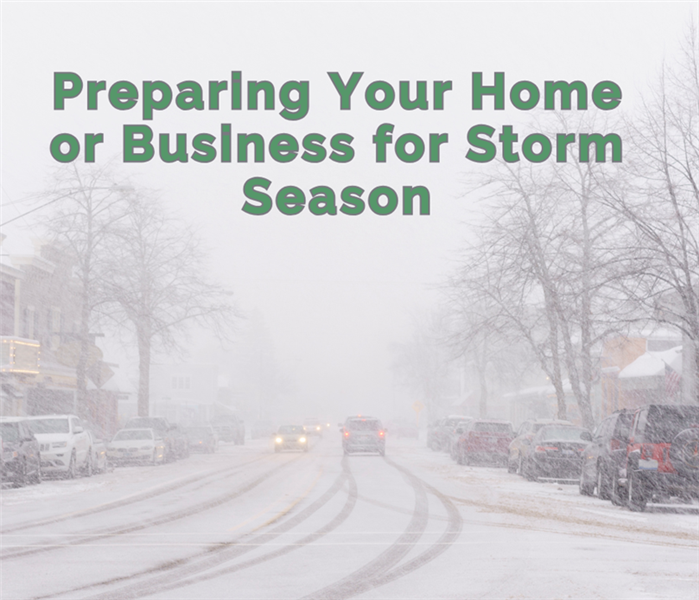 Trust SERVPRO of Foxborough to be your partner in storm recovery. With our expertise and commitment, we’ll help restore your property.
Trust SERVPRO of Foxborough to be your partner in storm recovery. With our expertise and commitment, we’ll help restore your property.
Storm season can bring unexpected challenges, but with proper preparation, you can safeguard your property and reduce the risk of significant damage.
Steps to Fortify Your Property
Seal Windows and Doors
Inspect for any gaps or cracks and apply weatherproofing materials to prevent water intrusion.
Maintain Gutters and Downspouts
Clear out debris to ensure proper water drainage and reduce the chance of flooding.
Secure Outdoor Items
Bring in or securely anchor furniture, tools, and equipment to prevent them from being damaged or causing harm during strong winds.
The Importance of an Emergency Plan
A well-prepared emergency plan is crucial for safety and quick recovery. Include the following:
Emergency Contacts
Have a list of essential contacts, including SERVPRO’s number, for fast restoration assistance.
Evacuation Routes and Safe Spaces
Identify evacuation paths and designate a safe area to shelter during severe weather.
Inventory of Important Documents and Valuables
Store critical paperwork and valuable items in waterproof and fireproof containers.
When severe storms cause damage, SERVPRO of Foxborough is here to help. Our services include:
Rapid Response
Minimizing downtime and reducing further damage with fast, professional assistance.
Expert Training and Advanced Equipment
Our team is equipped with the tools and knowledge to restore your home or business efficiently.
Trust SERVPRO of Foxborough to be your partner in storm recovery. With our expertise and commitment, we’ll help restore your property and peace of mind. Stay prepared and stay safe!
Fire Damage: What to Do Before Help Arrives
1/16/2025 (Permalink)
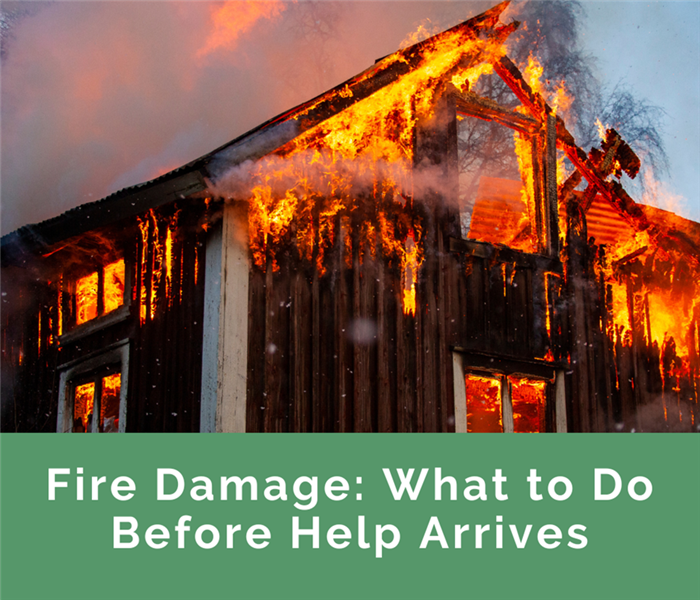 With advanced training and state-of-the-art equipment, we’re dedicated to restoring your home or business to its pre-fire condition.
With advanced training and state-of-the-art equipment, we’re dedicated to restoring your home or business to its pre-fire condition.
Experiencing a fire can be overwhelming, but taking the right steps afterward can make a significant difference. Here’s a guide to managing fire damage safely until professional assistance arrives.
1. Prioritize Safety
Your safety is the top priority. Do not re-enter the property until the fire department has confirmed it is safe to do so. Be cautious of structural instability, lingering smoke, and electrical hazards, which can pose serious threats.
2. Document the Damage
Once it’s safe, document the fire damage thoroughly. Take clear photos and videos of affected areas to provide essential evidence for insurance claims and to help ensure you receive proper compensation.
3. Avoid Cleaning on Your Own
Fire and smoke damage require specialized cleaning techniques. Attempting to clean soot, smoke, or damaged materials on your own can worsen the damage or spread harmful contaminants. Leave the restoration to trained professionals.
4. Trust the Experts in Fire Restoration
When our team arrives, we will assess the extent of the damage, develop a detailed restoration plan, and begin cleaning, deodorizing, and repairing your property. Our specialized equipment and expertise ensure even severe fire damage is handled efficiently.
As a trusted leader in the restoration industry, SERVPRO of Foxborough is here to help. With advanced training and state-of-the-art equipment, we’re dedicated to restoring your home or business to its pre-fire condition.
The Hidden Dangers of Mold and How We Can Help
1/9/2025 (Permalink)
 Mold may begin as a minor annoyance, but if ignored, it can become a serious structural hazard.
Mold may begin as a minor annoyance, but if ignored, it can become a serious structural hazard.
Mold may begin as a minor annoyance, but if ignored, it can become a serious structural hazard. Here’s what you need to know about mold’s risks and how we can help you address them.
Common Causes of Mold in Homes and Businesses
Mold thrives in damp, humid environments, often becoming a problem due to:
- Water damage or flooding
- Leaking plumbing
- Poor ventilation or high indoor humidity
Bathrooms, basements, and areas prone to condensation are especially vulnerable.
Signs You Need Professional Mold Removal
Watch for these warning signs that may indicate a mold problem:
- Persistent musty odors
- Discoloration or visible staining on walls, ceilings, or floors
SERVPRO’s Comprehensive Mold Remediation Process
At SERVPRO of Foxborough, we go beyond surface cleaning—we tackle mold at its source. Our process includes:
- Comprehensive Assessment: Determining the full scope of the mold issue.
- Containment: Preventing the spread of mold spores during remediation.
- Advanced Mold Removal: Using specialized equipment and techniques to remove mold safely and effectively.
- Restoration: Repairing and restoring your property to its original condition.
Preventive Tips to Keep Mold Away
Follow these tips to minimize the risk of mold growth:
- Keep indoor humidity levels below 60%.
- Address water damage and fix leaks promptly.
- Ensure adequate ventilation in moisture-prone areas, such as kitchens, bathrooms, and basements.
As a trusted leader in the restoration industry, SERVPRO of Foxborough has the expertise, training, and advanced equipment to help you restore your home or business to a safe, mold-free state. Contact us today for reliable mold remediation services!
Top 5 Reasons to Call Us After Water Damage
1/1/2025 (Permalink)
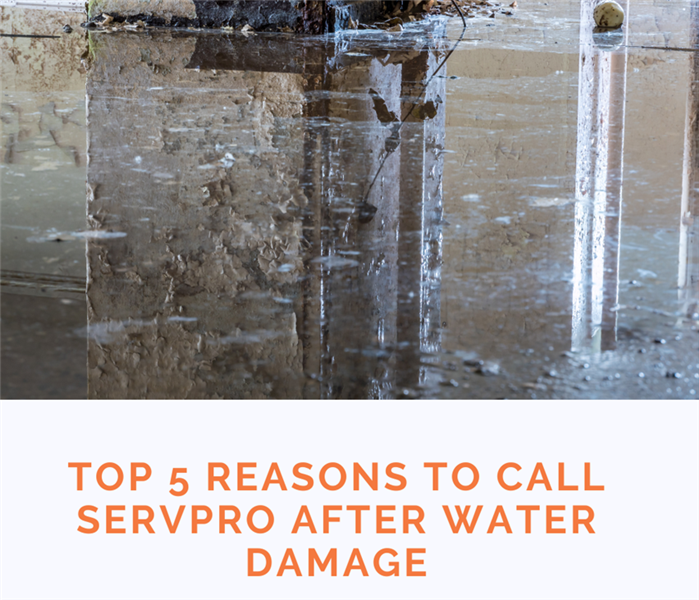 Don’t let water damage take a toll on your property. As a trusted leader in the restoration industry, Foxborough has the expertise
Don’t let water damage take a toll on your property. As a trusted leader in the restoration industry, Foxborough has the expertise
Water damage can happen when you least expect it, putting your home or business at risk of lasting harm if not addressed immediately. Here’s why calling us after water damage is the best decision you can make:
1. Swift Action Stops Mold in Its Tracks
Mold can begin growing within just 24-48 hours of water exposure, potentially causing significant property damage. Our team responds promptly to mitigate water damage and prevent mold growth before it becomes a larger problem.
2. State-of-the-Art Water Extraction and Drying
We utilize advanced technology to remove water thoroughly. From high-powered pumps to sophisticated drying equipment, our tools ensure even hidden moisture—such as behind walls or beneath flooring—is eliminated. This helps prevent further structural damage and costly repairs.
3. Experienced Professionals You Can Trust
Our highly trained restoration experts bring years of experience to every situation. Whether it’s a small leak or significant flood, we deliver efficient, reliable solutions to restore your property and peace of mind.
4. Simplified Insurance Claims
Filing an insurance claim after water damage can feel overwhelming. We work closely with insurance providers, providing detailed documentation and expert guidance to streamline the claims process and help you secure the compensation you’re entitled to.
5. Proven Results You Can Count On
We’ve helped countless property owners recover from water damage. From saving a homeowner’s flooded basement to getting a business back up and running after a storm, our success stories highlight our commitment to exceptional service.
Don’t let water damage take a toll on your property. As a trusted leader in the restoration industry, Foxborough has the expertise, training, and tools to restore your home or business to its original condition.
Commercial Restoration: Protecting Your Business from Disaster and Getting Back on Track
12/17/2024 (Permalink)
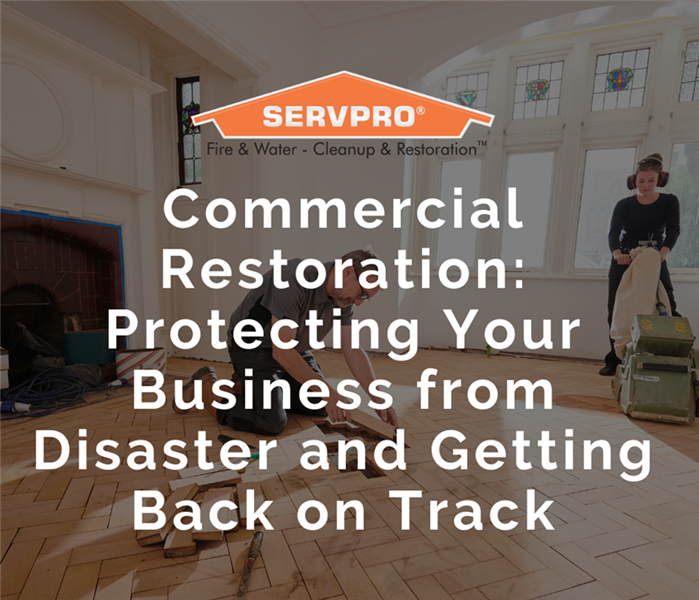 SERVPRO of Foxborough offers industry-leading expertise, advanced equipment, and comprehensive training to restore your property and peace of mind.
SERVPRO of Foxborough offers industry-leading expertise, advanced equipment, and comprehensive training to restore your property and peace of mind.
Unexpected disasters—whether from water, fire, mold, or severe weather—can leave your business in chaos. Beyond halting operations, these events affect employees, customers, and profits. Commercial restoration is essential for minimizing downtime and quickly resuming normal operations. Here's an overview of the restoration process, common types of damage, and steps to protect your business from future disasters.
Why Commercial Restoration Matters
Every moment your business remains closed results in lost revenue and productivity. Rapid response is crucial to reduce the overall impact on your company’s success. Restoration professionals provide expert cleanup, repairs, and safety measures, ensuring a secure and healthy environment for employees and customers to return confidently.
Common Types of Commercial Damage
1. Water Damage
- Causes: Burst pipes, roof leaks, flooding, or malfunctioning sprinkler systems.
- Impact: Structural damage, mold growth, and destruction of inventory or equipment.
- Restoration Process: Water extraction, drying, dehumidification, and moisture monitoring to prevent long-term issues.
2. Fire and Smoke Damage
- Causes: Electrical issues, kitchen fires, or industrial accidents.
- Impact: Damage from flames, lingering smoke odors, and soot contamination that can seep into surfaces.
- Restoration Process: Removal of soot, deodorization, deep cleaning, and repairs to protect walls, equipment, and furniture.
3. Mold and Fungal Growth
- Causes: High humidity, poor ventilation, or unresolved water damage.
- Impact: Health hazards and damage to walls, floors, and HVAC systems.
- Restoration Process: Mold containment, air filtration, removal, and preventive steps to avoid future growth.
4. Storm and Wind Damage
- Causes: Severe weather, including hurricanes, tornadoes, or heavy rain.
- Impact: Broken windows, roof leaks, structural damage, and flooding.
- Restoration Process: Repairs, water extraction, debris removal, and reconstruction as needed.
The Commercial Restoration Process: What to Expect
1. Assessment and Inspection
Professionals evaluate the damage, perform moisture mapping, and inspect air quality and structural integrity to create a customized restoration plan.
2. Mitigation and Containment
Swift action limits further damage. This includes:
- Boarding up windows and securing roofs.
- Extracting standing water and setting up dehumidifiers.
- Establishing barriers for containment.
3. Cleanup and Removal
All damaged materials—flooring, drywall, furniture, or equipment—are removed. Soot, ash, mold, and water residues are cleaned with advanced equipment to ensure safety.
4. Restoration and Repair
Damaged structures are repaired or rebuilt, including repainting walls, refinishing surfaces, and deodorizing to eliminate lingering odors.
5. Final Inspection and Preventative Recommendations
Before reopening, restoration experts ensure the property is safe and fully restored. They may also suggest preventative measures like fireproofing upgrades or improved moisture control.
Choosing the Right Commercial Restoration Partner
Selecting an experienced restoration company ensures a seamless recovery process. Look for these qualities:
- 24/7 Emergency Services: Rapid response minimizes damage.
- Specialized Equipment: Commercial properties require advanced tools and techniques.
- Knowledge of Codes and Regulations: Particularly vital in industries like healthcare and food service.
- Project Management Expertise: A skilled partner will coordinate contractors, permits, and inspections to streamline restoration.
Protecting Your Business from Future Disasters
Preventative Measures:
- Regular Maintenance: Inspect plumbing, HVAC, roofing, and electrical systems to identify potential issues early.
- Waterproofing Solutions: Seal foundation cracks, ensure proper drainage, and install water-resistant barriers.
- Disaster Preparedness Plan: Create an emergency plan with evacuation routes, contact lists, and procedures for safeguarding data and equipment.
- Fire Safety Systems: Regularly inspect fire alarms, sprinklers, and extinguishers.
- Insurance Review: Ensure your policy covers potential risks, including business interruptions.
Facing a disaster is challenging, but with a trusted restoration team and preventative strategies, your business can recover quickly and thrive. Whether dealing with water, fire, mold, or storm damage, proactive planning and immediate action are essential for minimizing disruption and getting back to business as usual.
SERVPRO of Foxborough offers industry-leading expertise, advanced equipment, and comprehensive training to restore your property and peace of mind.
Commercial Restoration: Safeguarding Your Business and Restoring Operations
12/17/2024 (Permalink)
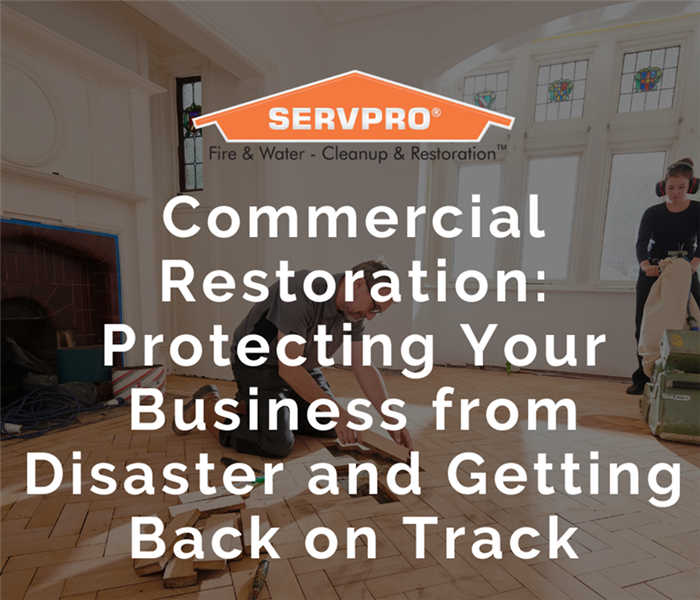 When disaster strikes, rely on the expertise of SERVPRO of Natick, Milford, and Foxborough.
When disaster strikes, rely on the expertise of SERVPRO of Natick, Milford, and Foxborough.
When unexpected damage strikes a business—whether from water, fire, mold, or severe weather—the effects can be overwhelming. Such disasters disrupt daily operations, impact employees and customers, and hurt bottom-line profits. Commercial restoration is critical for businesses to recover swiftly and get back on track. This guide explores the restoration process, common types of damage, and ways to safeguard your business for the future.Why Commercial Restoration Is Crucial
Every hour a business remains closed due to damage equates to lost revenue and productivity. Acting quickly reduces downtime and mitigates the long-term effects on your company’s success. Professional restoration services not only handle cleanup and repairs but also ensure a safe, healthy environment for your team and customers to return to confidently.
Common Types of Commercial Damage
Water Damage
- Causes: Burst pipes, roof leaks, flooding, or malfunctioning sprinkler systems.
- Impact: Water can lead to mold growth, structural damage, and ruined equipment or inventory.
- Restoration Process: Includes water extraction, drying, dehumidification, and monitoring to ensure moisture is fully removed.
Fire and Smoke Damage
- Causes: Electrical fires, kitchen fires (common in restaurants), or industrial accidents.
- Impact: Fire damage is often paired with smoke and soot, which penetrate surfaces, leaving behind odors and health risks.
- Restoration Process: Involves soot removal, deodorizing, and deep cleaning with specialized techniques to prevent further damage to walls, equipment, and furniture.
Mold and Fungal Growth
- Causes: High humidity, past water damage, or poor ventilation.
- Impact: Mold damages walls, floors, and HVAC systems, and poses health risks to employees.
- Restoration Process: Includes containment, air filtration, removal, and steps to prevent future mold issues.
Storm and Wind Damage
- Causes: Severe weather events like hurricanes, tornadoes, or heavy rains.
- Impact: Damage ranges from broken windows and roof leaks to downed trees and flooded basements.
- Restoration Process: Encompasses structural repairs, water extraction, debris removal, and necessary reconstruction.
What to Expect During the Commercial Restoration Process
1. Assessment and Inspection
- Restoration experts conduct a thorough evaluation to determine the extent of damage.
- The process often includes moisture mapping, air quality testing, and structural inspections.
2. Mitigation and Containment
- Immediate actions like boarding up windows, covering roofs, and isolating damaged areas prevent further harm.
- For water and mold damage, mitigation includes extracting standing water and setting up dehumidifiers.
3. Cleanup and Removal
- Damaged materials (e.g., drywall, flooring, furniture) are removed as necessary.
- Specialized equipment is used to clean soot, mold, and water residue, ensuring affected areas are safe.
4. Restoration and Repair
- Repairs range from repainting walls to rebuilding damaged structures.
- Deodorizing and refinishing surfaces ensure the space is restored to its original condition.
5. Final Inspection and Prevention Recommendations
- Before reopening, a final inspection ensures the property is safe and fully restored.
- Many restoration professionals provide advice on preventing future damage, such as moisture control or fireproofing upgrades.
Choosing the Right Commercial Restoration Partner
Selecting a reliable restoration partner ensures a smooth recovery process. Look for companies that offer:
- 24/7 Availability: Quick response times minimize damage.
- Specialized Equipment and Expertise: Commercial properties require advanced tools and techniques.
- Knowledge of Local Regulations: Ensure compliance with codes, particularly in industries like healthcare or food service.
- Comprehensive Project Management: Managing contractors, permits, and inspections is complex, but a skilled partner can handle these tasks seamlessly.
Preparing Your Business for Future Disasters
Preventative Measures:
- Routine Maintenance: Regularly inspect plumbing, roofing, HVAC, and electrical systems.
- Waterproofing Solutions: Seal foundation cracks, improve drainage, and consider water-resistant barriers.
- Disaster Preparedness Plan: Outline evacuation routes, secure data, and assign emergency roles.
- Fire Safety Systems: Ensure alarms, sprinklers, and extinguishers are in working order and meet regulations.
- Insurance Coverage: Regularly review your policy to ensure it includes adequate coverage for business interruption.
By taking proactive steps and partnering with experienced restoration professionals, businesses can minimize the impact of disasters, recover efficiently, and safeguard operations for the future.
Trusted Leaders in Commercial Restoration
When disaster strikes, rely on the expertise of SERVPRO of Natick, Milford, and Foxborough. With advanced training, state-of-the-art equipment, and 24/7 availability, we’re here to restore your business.
Frozen Pipes and Ice Dams: What to Do If You Return to Winter Water Damage
12/10/2024 (Permalink)
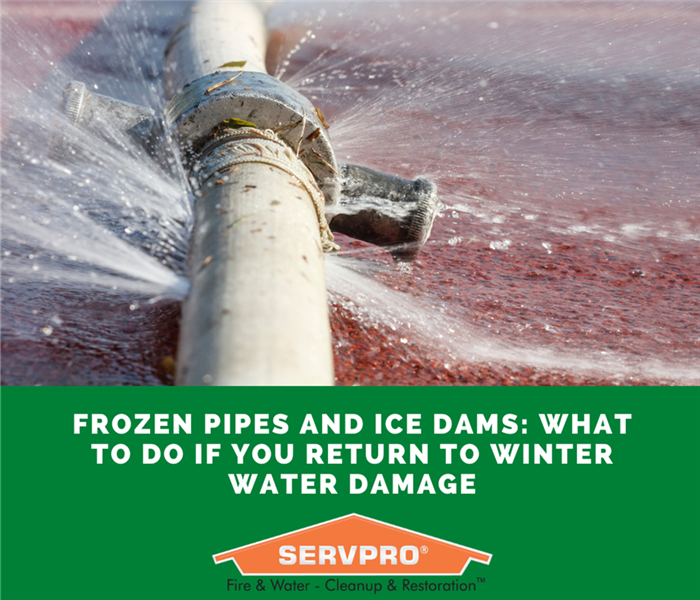 SERVPRO of Foxborough is a trusted leader in restoration services, with the training and equipment to handle water damage restoration
SERVPRO of Foxborough is a trusted leader in restoration services, with the training and equipment to handle water damage restoration
Winter vacations offer the perfect chance to relax, but coming home to frozen pipes or water damage can quickly undo that peace of mind. When temperatures plummet, frozen pipes and ice dams can wreak havoc on your home, leading to expensive repairs if left unaddressed. Here's a guide to identifying and mitigating these winter risks—and preventing them from happening again.
1. Understanding the Threats: Frozen Pipes and Ice Dams
Frozen Pipes: When temperatures fall, the water in your pipes can freeze and expand, potentially cracking or bursting them. Once they thaw, water can pour out, causing significant damage.
Ice Dams: These form when snow on your roof melts but refreezes near the edges, creating blockages. The trapped water can seep into your home, damaging walls, ceilings, and insulation.
2. Recognizing the Warning Signs
Inspect your home for signs of trouble:
- Water Stains: Leaks from ice dams often leave marks on walls or ceilings.
- Low Water Pressure: A weak flow from faucets could signal frozen pipes restricting water flow.
- Pooling Water or Dampness: Look for moisture near exterior walls, basements, or under sinks.
- Frosted Pipes: In unheated spaces like attics or basements, frosted pipes indicate freezing.
3. What to Do Immediately
If you notice water damage or suspect frozen pipes, act fast to prevent more damage:
- Shut Off Water: Turn off the main water supply if a pipe bursts.
- Power Off Affected Areas: For significant flooding, turn off electricity to those rooms before entering.
- Drain Pipes: Open all faucets to relieve pressure and drain remaining water.
- Clean Up Water: Use towels or a wet-dry vacuum to soak up water and reduce mold risks.
4. How to Thaw Frozen Pipes
For frozen pipes that haven’t burst, follow these safe thawing methods:
- Apply Heat Gradually: Use a space heater, heating pad, or hair dryer on frozen pipes. Avoid open flames.
- Start with Accessible Pipes: Begin thawing exposed pipes and work toward harder-to-reach areas.
- Keep Faucets Open: Allow a trickle of water to run, aiding the thawing process.
5. Dealing with Ice Dam Damage
Ice dams can cause hidden damage. Address them with these steps:
- Check Insulation: Remove and replace wet insulation in your attic to prevent mold.
- Inspect Walls and Ceilings: Fix any damp or discolored areas promptly.
- Use a Dehumidifier: Dry out any remaining moisture in affected areas.
6. When to Call the Experts
Some situations are best left to professionals:
- Major flooding or extensive damage.
- Visible mold growth.
- Water has infiltrated electrical systems or insulation, creating safety risks.
Restoration experts have specialized tools—like moisture meters and industrial-grade dehumidifiers—to ensure thorough repairs and prevent further damage.
7. Preventing Winter Water Damage
Take these proactive steps to safeguard your home:
- Insulate Pipes: Wrap exposed pipes to protect against freezing.
- Drip Faucets: Let faucets drip during extreme cold to avoid pipe freezing.
- Maintain Attic Insulation: Proper insulation helps prevent ice dams by keeping your roof cold.
- Clear Gutters: Ensure gutters are free of debris to allow snowmelt to flow away.
8. Prepping Your Home Before Winter Trips
Protect your home while you’re away:
- Set the Thermostat: Keep it at 55°F or higher to prevent freezing.
- Shut Off Water Supply: If possible, turn off the water and drain pipes.
- Open Cabinet Doors: Allow warm air to circulate around pipes under sinks.
A relaxing winter vacation shouldn’t be followed by the stress of dealing with water damage. By spotting the signs and taking preventative measures, you can avoid costly repairs and keep your home safe.
SERVPRO of Foxborough is a trusted leader in restoration services, with the training and equipment to handle water damage restoration swiftly and effectively. Whether it’s frozen pipes, ice dams, or any other winter hazard, we’re here to help restore your peace of mind.





 24/7 Emergency Service
24/7 Emergency Service









